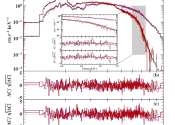Robotics meet X-ray lasers in cutting-edge biology studies
Scientists at the Department of Energy's SLAC National Accelerator Laboratory are combining the speed and precision of robots with one of the brightest X-ray lasers on the planet for pioneering studies of proteins important ...






